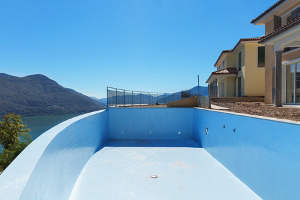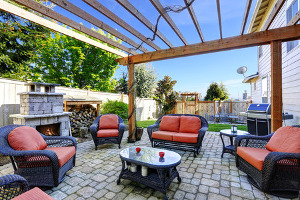
For many homeowners, a backyard swimming pool was once the centerpiece of family fun. But over time, upkeep can become expensive, and an aging, unused pool can become a safety hazard, an eyesore, and even a liability. The growing concern over maintenance costs, potential structural damage, and the risk of accidents may leave homeowners wondering: What’s the best option for an inground pool removal and reclaim valuable yard space?
If the thought of an unused or deteriorating pool has you considering selling your home just to get rid of it, you might want to reconsider. In many cases, pools can actually make selling a home more difficult, particularly if they are outdated or in need of repairs. Fortunately, professional pool removal services can help homeowners remove their pools and transform their outdoor spaces into something more functional and appealing.
This guide will cover the main removal options available to homeowners, the advantages of each approach, and how to make the most of the space post inground pool removal.
Two Types of Pool Removal
There are two main methods for removing an inground pool: partial removal and full removal. Each approach has its own advantages and considerations, depending on the homeowner’s goals and budget.
1. Partial Pool Removal (Pool Fill-In)
Partial removal, or “filling in the pool,” is the most common and least expensive method for removing an inground pool. Here’s how it works:
- The contractor first drains all water from the pool.
- Several holes are drilled into the pool floor to allow for drainage and prevent moisture build-up.
- The top 18 inches of the pool walls are demolished, and any unwanted decking is removed.
- The remaining shell of the pool is filled with a mixture of gravel and dirt.
- The site is then compacted to minimize settling over time.
Pros of Partial Pool Removal
- More cost-effective than full removal
- Faster completion time
- Suitable for homeowners who don’t plan to construct new structures on the site
Cons of Partial Pool Removal
- Pool debris remains buried underground, which can result in uneven settling over time
- Most cities require disclosure of partial pool removal when selling the home
- May not be permitted for future construction, as building codes could restrict development on partially removed pool sites
If you simply want to fill in your pool to regain yard space but don’t have future plans for building new structures on the site, a partial removal could be a good option. However, if you want to maximize the long-term usability of your yard, a full removal may be the better choice.
2. Full Pool Removal (Complete Demolition and Removal)
With full pool removal, every part of the pool is completely removed, leaving behind no traces of the structure. Here’s how the process works:
- The contractor completely drains the pool.
- The entire pool shell, including the bottom and walls, is completely broken up.
- All debris is removed from the property, ensuring no buried materials remain.
- The resulting cavity is filled with compacted dirt and gravel for proper stabilization.
Pros of Full Pool Removal

- Eliminates any risk of soil settling or future sinkholes
- Allows for new construction on the site without restrictions
- No need to disclose buried pool debris when selling the home
- Increases long-term property value by opening up space for new possibilities
Cons of Full Pool Removal
- More expensive than partial removal
- Requires more time and labor to complete
For homeowners planning to sell their property in the future or who want the flexibility to build a new structure (such as an addition, patio, or garden), a full pool removal is the best approach.
What to Do with Your Yard After Pool Removal
Now that your pool is gone, the possibilities for transforming your outdoor space are endless. Here are some ideas for maximizing the use and beauty of your newly reclaimed yard.
1. Create a Sun-Loving Garden with Native Plants
Most pools are built in the sunniest part of the yard, making the area ideal for a vibrant garden with sun-loving flowers and shrubs. Since the pool site has no existing grass, preparing a garden bed may require less effort than converting the space into a traditional lawn.
Before planting, test the soil for residual chlorine and other pool treatment chemicals. If needed, amend the soil with compost and fresh topsoil to promote healthy plant growth. Once established, a well-designed garden can enhance the beauty of your property, attract pollinators, and create a relaxing outdoor retreat.
2. Build a Patio and Outdoor Living Space
The compacted soil from your pool removal provides an excellent foundation for an outdoor patio. If portions of the original pool deck remain intact, consider integrating them into your design for a seamless and cost-effective transition.
By adding an outdoor kitchen, fire pit, and comfortable seating, you can transform the space into the ultimate entertainment area. If plumbing and electrical connections from the pool remain, they may be repurposed to accommodate an outdoor kitchen or enhanced lighting features.
3. Install a Fire Pit for Cozy Gatherings
If a full-scale patio is beyond your budget or needs, a simple fire pit surrounded by seating can create a warm and inviting focal point for outdoor gatherings. Adding gravel or grass around the fire pit creates a natural, low-maintenance setting that requires minimal upkeep.
4. Expand Your Lawn for Kids and Pets
If you have children or pets, replacing the pool space with a lush, open lawn can provide plenty of room for outdoor play. Grass is easy to maintain and allows for options such as installing a swing set, a trampoline, or even a small sports area.
5. Construct a Home Addition or New Garage
For homeowners who opt for full pool removal, the cleared space provides the perfect foundation for an expansion, whether it’s a garage, workshop, or additional living space. Because full removal eliminates the risk of soil settling, the ground will be stable enough for future construction projects.
Why Hire a Professional Pool Removal Contractor?
Pool removal is a significant undertaking that requires expertise in excavation, demolition, and site restoration. A professional contractor will ensure the process is completed safely and efficiently, minimizing risks such as soil instability or improper drainage.
W orking with a qualified pool removal specialist offers these benefits:
orking with a qualified pool removal specialist offers these benefits:
- Compliance with local building regulations and property codes
- Proper disposal of debris, preventing environmental hazards
- Quality compaction to prevent future sinking or uneven settlement
- Expert guidance on landscaping and site preparation post-removal
Choosing the right contractor can make all the difference in achieving a successful outcome. A reputable removal service will assess your property, explain your options, and guide you through the process from start to finish.
Book Our Experienced Inground Pool Removal Professionals
If your swimming pool has become more of a burden than a benefit, removing it can be a smart investment in your home’s value, safety, and usability. Whether you choose partial removal for a cost-effective solution or full removal for maximum long-term benefits, working with a knowledgeable contractor ensures a smooth and hassle-free experience.
Once your pool is gone, your outdoor space becomes a blank canvas with endless possibilities. Whether you decide to plant a beautiful garden, build an inviting fire pit, or create a stunning patio area, removing an unwanted pool allows you to make the most of your property while eliminating costly maintenance and safety concerns.
For professional inground pool removal services, contact Dirt Connections today and start transforming your yard into a space you truly love.








































